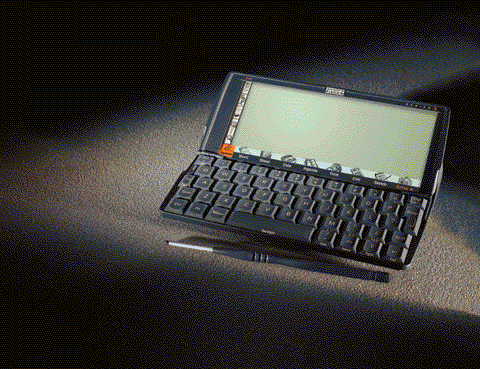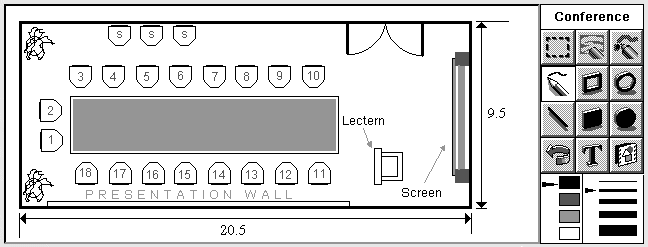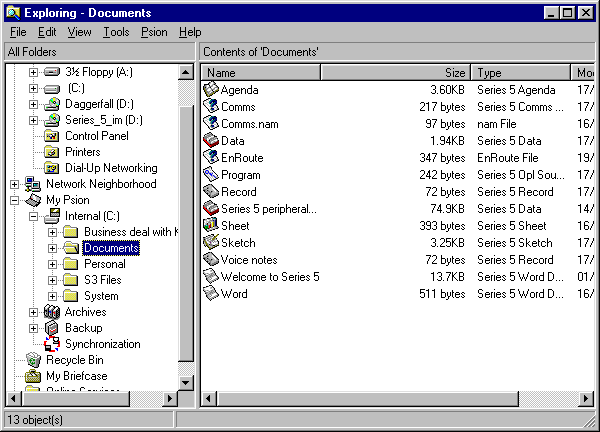
For the Want of a Nail...
As I am writing this, the new Psion machine has just been launched; there should be a full review of the new machine in this issue.
The new machine is called the Series 5, and is slightly longer than the S3C, but smaller than the Windows CE machines currently available. As the case opens the keyboard, which uses proper typewriter keys, tilts forward, making the machine more stable for both desktop and palmtop use. There is one slot for Compact Flash, the new standard for memory additions used in digital cameras, but there is no built in SSD or PCMCIA support. An addon will be available later to permit mobile use of PCMCIA cards. An iRDA infrared port is included, but it isn't compatible with old models. The display and operating system support pen or touch input, with icons around the edge for common operations and applications. There will be two configurations initially available, one with 4 Mb RAM at £439 (including VAT) and one with 8 Mb for £499. The main processor is an ARM 7100 variant, made under license by Cirrus Logic, the 7110, which runs at 18.432 MHz.
Psion's Series 5

One of the interesting points about the 7110 is that Microsoft have a port of Windows CE available for it; and Microsoft are holding one slot for a new licensee. The Series 5 is very close to the CE hardware specification, and it seems quite possible that Psion could convert to manufacturing CE systems very easily. This is very similar to what they did with the MC400 laptop, which was issued in two versions: one a plain MS-DOS laptop, the other running a operating system compatible with the Series 3.
The operating system will be the EPOC/32 system that Psion have been issuing press releases and talking about with vendors for some time. This uses a version of OPL, with a version of OLE compatibility and a Visual C++ development environment. It has TCP/IP built in, and will eventually have a stack for GSM phones to make connection cheaper and easier.
Applications are enhancements of the current Series 3 ones, with a new Sketch application included. There is no handwriting recognition, and both email and a web browser will be released later (at no charge). Fax software should be downloadable from Psion's web site. At the launch Palmtop were showing EnRoute, their new AutoRoute replacement, and Purple Software had ports of their products, including Chess.
The new Sketch application

Some interesting deals weren't discussed at the launch that possibly should have been included the possibility of licensing EPOC/32 to other companies. Given the concerns about Psion's competition with Windows CE, this would have gone a long way to bolster their credibility. The possible ports of Java and of Citrix's ICA technology that would permit displaying NT windows on a Series 5 were also conspicuous by their absence.
Considering that two very important applications, email and a web browser, were also missing, it could be that this launch was much earlier than it should have been. For email to be late, when it should be one of the applications on the icon bar, is disappointing. If Psion really want to compete in the corporate markets against CE, email is the most important application. The new PsiWin 2.0 includes synchronisation, but this only works with the Agenda, not Addresses.
PsiWin 2.0 integrates with Explorer

It appears to me that Psion aren't ready to compete against CE (missing email and web), and they aren't ready to join them. Given the superior polish that Psion are capable of putting on their products, and their existing market share, a strong competitive stance against CE would stand an excellent chance of success. So why the want of a nail?
Words and design by:
Paul Lynch
Last updated: July 30, 1997